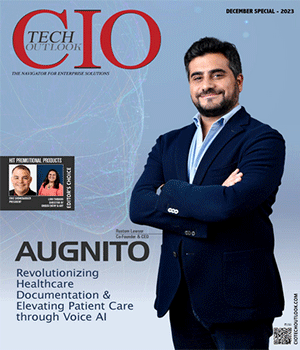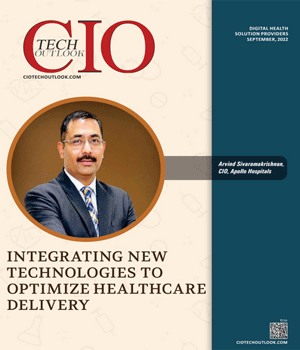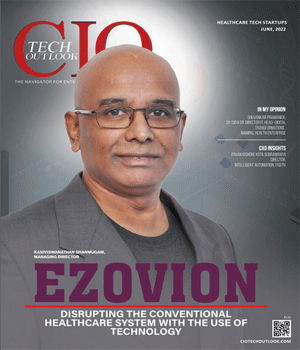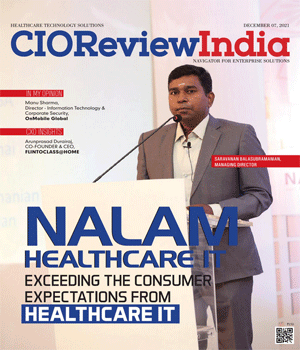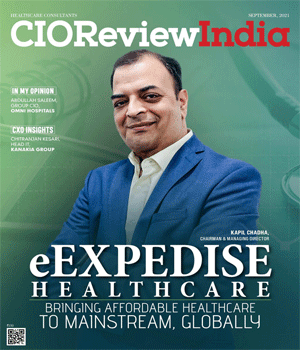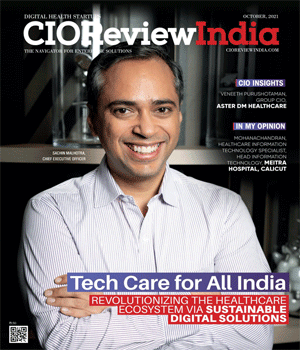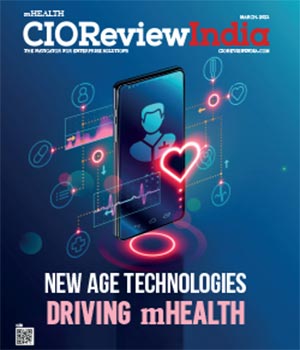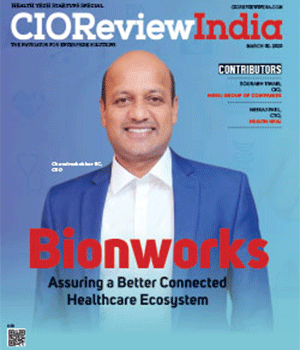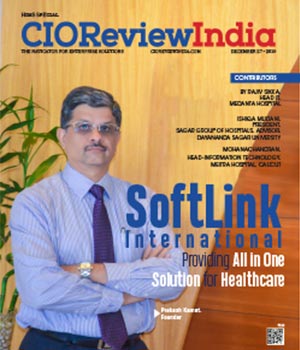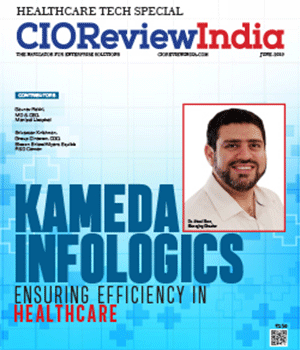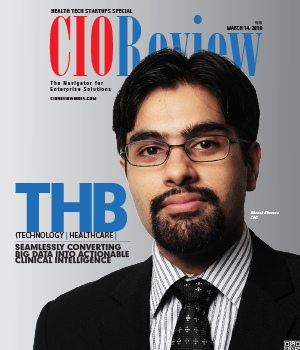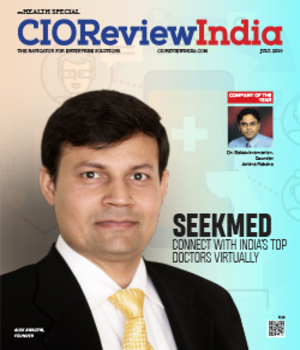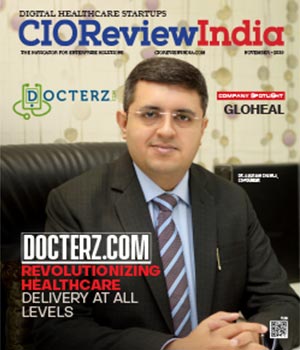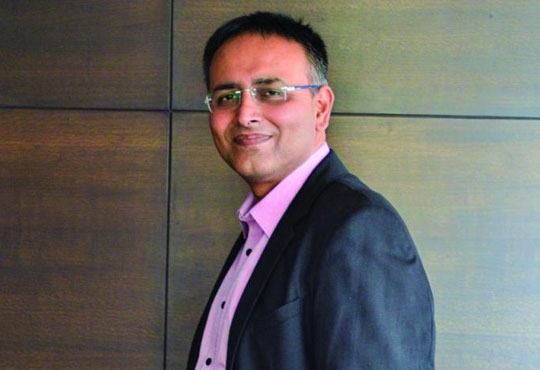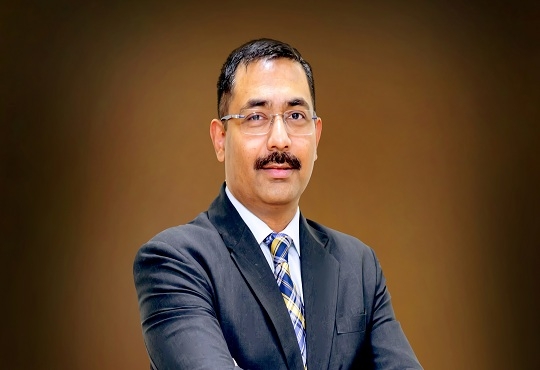
Changing The Outlook Towards Healthcare Challenges
Ashish Sood, Head Technology, Nayati Healthcare & Research Pvt. Ltd. | Wednesday, 27 January 2021, 09:34 IST
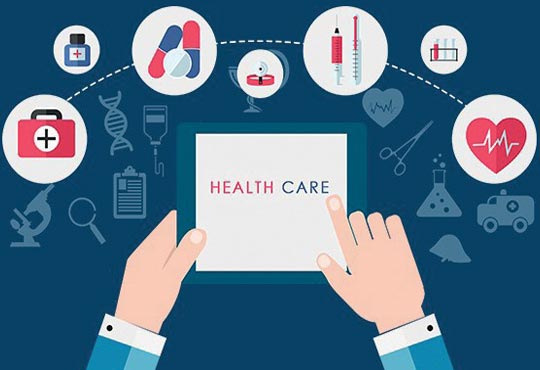
Challenges often present themselves in two categories – avoidable and unavoidable. The avoidable challenges are the ones that we often fail to take care of and these remain unaddressed and thus unresolved. When we apply this notion to healthcare IT in India, one of the biggest challenge that most of us will agree to is EMR. In India, EMR has largely been unaddressed except for a very limited places. When we dive on to this challenge, we are often struck with the following roadblocks by clinicians as impediments towards getting on with it:
1) Clinicians do not see any commercial benefit for using EMR except safety of records
2) The number of patients in OPDs are high and they do not get the time for recording notes and prescriptions in EMR
3) Clinicians loose eye contact with the patients when they turn to the computer monitors to make the prescriptions in EMR
The last two decades saw many hospitals and institutions apply different solutions to make the clinicians use EMR. Voice to text, writing with a pen and auto transcription, etc were all tried and failed. Let us not get into the reasons of the failures. All of us must have tried some of these more than once in our life times in healthcare IT.
If we analyse and compare some of the better EMR products available in the market today, we will see that some of these products have addressed some of these issues already.
Some EMR products available today, have resolved the issue of time by introducing a lot of time saving factors ranging from favourites in diagnosis, complaints, investigations, medicines, surgeries / procedures and follow ups to pre-filled texts in diet, exercise and other advises. A few EMR products even have pre-defined templates for common health conditions like kidney stone. Such conditions have fixed investigations like USG-KUB, CT-KUB, fixed medicines like Stone 1b6, Voveran and fixed procedures like URS and DJ stenting, and even fixed follow ups of 4-6 weeks. In such cases, EMR pre-fill everything and lets the clinician make necessary changes in this pre-filled material based on the specifics of that particular patient.
At the same time, a few EMR products have introduced tablet device compatible EMR products based on the touch and go interface, thus taking care of the eye contact issue by eliminating the use of a monitor, keyboard and mouse. The clinicians can now retain the eye contact and use EMR at the same time.
“EMR today is a lot more valuable than it was perceived to be in the former years. Given these benefits, clinicians today are much more open to EMR”
Now, getting to the point where we can generate revenue from the use of EMR. Whether on paper or in electric version in the form of an EMR, clinicians have been generating leads in their daily usual prescriptions for ages. While prescribing in OPDs, clinicians enter information in the following sections in an EMR:
1) Complaints
2) Patient and family history
3) Diagnosis
4) Investigations
5) Medicines
6) Surgery / Procedure
7) Admission advise
8) Follow up
Out of these eight, there is at least five sections which are revenue generating sources for a hospital. Whenever a clinician prescribes medicines, advices investigations, procedures, surgery or admission or orders a follow up to a patient, these become business opportunities for the hospital. From now on we shall refer to these as Revenue Opportunities (ROs) or leads.
An EMR alone gives the opportunity to create these as leads which a paper or manual EMR does not provide. A lead is generated at the very moment a clinician enters any of the ROs. A small team can be formed which shall pursue these leads. This teams shall now be referred to as a lead teams. There can be a single team to handle all such leads or separate for investigations, admissions and surgeries. A run time notification in the form of an SMS and/or an email gets shot to the lead team members. They shall follow up with the patients and convert them for majorly the following:
1) Investigations of more than Rs. 1,000 (this value can be different for different hospitals) in total value. These can be simple pathology investigations or diagnostic investigations like MRI and CT.
2) Advise for surgery or some procedure.
3) Advise for admission for medical management etc.
4) Prescription for medicine of more than a total value of Rs. 1000 (This value can be different for different hospitals).
5) Follow up in the OPD in cases of ongoing treatment of chronic illnesses like CKD, IBD, observation courses like obstetrics (pregnancy cycle), immunizations cycles, etc.
Although lead types 1 and 4 as mentioned above are low ticket leads, but, these eventually have the potential to get converted into lead types 2 or 3 which are high value ticket size leads.
Lead type 5 is a whole new concept. Here, the patients who have the need for longer duration treatments are taken care of. These patients have cyclic visits to the hospital like dialysis or a pregnancy cycle of an expecting mother. When the doctor marks the follow up date for such patients, the system sends out another lead to the lead team. Lead team can also follow up with the patient to make sure that the continuity of care is not lost. This is an important area which needs attention as sometimes, chronic disease patients tend to discontinue their treatment or simply continue their treatment at another hospital. This mechanism can help plug these kind of leaks through the use of such technology platforms. The system can also send out reminders to patients one day prior to the appointment date.
EMR has been more than often been seen as something to benefit in the longevity of records and clarity of prescriptions. Whereas, today we see EMR as something that can add the assurance of continuity of care, jump up revenues, and save the patients from prescription errors as well. Certain CDSS (Clinical Decision Support Systems) are available in the international as well as domestic Indian markets. These have to be integrated with the EMR. The CDSS keeps a watch on the prescription of medicines in both OPD and IPD. The CDSS gives out alerts whenever a doctor wrongly puts a dose for a medicine, when a medicine being prescribed interacts with another on-going medicine, when a medicine being prescribed is believed to interact with a current allergy, when a medicine should not be prescribed to a pregnant women or a lactating mother and also when there is a duplicate medicine being prescribed.
Such alerts save both the patient and the doctor from prescription errors.
It is very much obvious to conclude that the EMR today is a lot more valuable than it was perceived to be in the former years. Given these benefits, clinicians today are much more open to EMR.
CIO Viewpoint
Integrating New Technologies to Optimize...
By Abhrasnata Das
Quantum Shift in Healthcare Driven by...
By Abhrasnata Das
Product Adoption: Realizing The Real Value
By Ashish Pandey, CIO, GSK Consumer Healthcare India
CXO Insights
HIT Promotional Products: Fostering Empowerment...
By Eric Shonebarger, President & Lori Thibado, Director of Order Entry & Art
Addressing the Data Management Challenges in...
By Richa Singh
Elevating Patient Experience with Remote...


